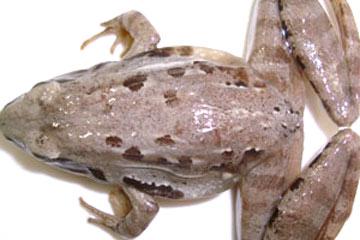
Amphibian, reptile and fish collection
The fluid-preserved vertebrate collection includes an internationally important research collection of amphibians and reptiles, and a small collection of fish.
Part of the vertebrate zoology collection
Amphibian and Reptile (Herptile) collection
The collection includes 3000 specimens, the majority of which are adult or juvenile whole organisms, preserved in Industrial Methylated Spirits (denatured ethanol). The oldest specimens likely date from the 1840s and were donated to the collection shortly after World Museum was founded in 1851. Important collections were obtained during the Liverpool Museums expeditions to Socotra, Yemen in 1898/99, and to Peninsular Malaysia in 1913/14.
There are a number of snakes collected by controversial game warden CJP Ionides, known as “the Snake Man of British East Africa”, and JRF Mills, a ranger working in Uganda in the 1950s/60s. Specimens were purchased from the Liverpool Aquarium Company in 1960 following death in captivity, and others transferred from the Liverpool University Zoology Museum in 1999. An important collection of British reptiles was obtained from Ian Prestt and Bob Stebbings in 1964.
Significant, relatively recent, additions are those of former curator, Malcolm Largen, who was an authority on African amphibians and made extensive collection in Ethiopia in the 1980s, as well as collections from Martin Pickersgill made in Southern and Eastern Africa in the 1990s.
Our collection of British Reptiles & Amphibians is available for exploring online at the NBN Atlas and GBIF.
Our collection of Global Reptiles & Amphibians is available for exploring online at the NBN Atlas and GBIF.
Fish collection
The small fish collection (ca. 2,400 specimens) is worldwide in scope but has poor taxonomic coverage for any particular geographical area.
There are a few zoological types from the HMS Challenger expedition and some recent catfish types from South America. Another notable collection is the set of tumerous fish assembled by James Johnstone at the University of Liverpool in the 1920s. Early collections of this type from the Irish Sea are rare. Most of the fish are fluid-preserved specimens, but a few are dried.
The collection of fish, and other animals collected during the HMS Challenger expedition and now at World Museum are available to explore online at the HMS Challenger Collections.
